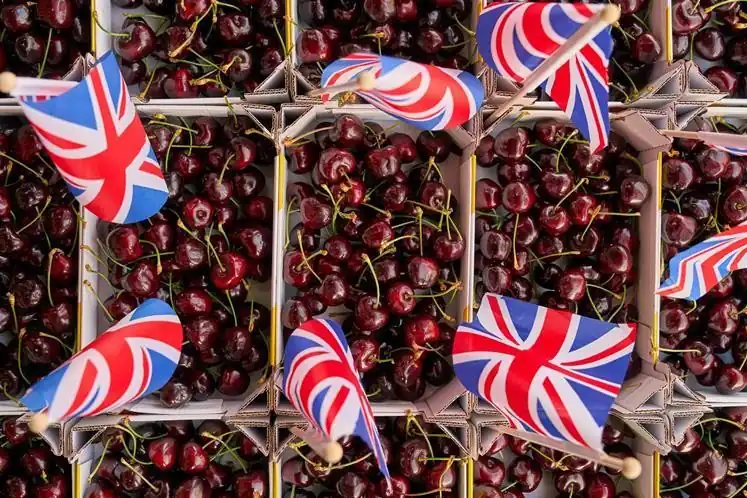It is red, plump, and tempting... But the cherry, of which the Provence-Alpes-Côte d'Azur region is, along with Rhône-Alpes, the largest producer in France, is not always very affordable. On the market, prices can vary even double, depending on the variety, and to buy a kilo of Burlat, Summit, or Duroni, you need to spend around 6 euros. But are these values so different from those of previous years?
Not really, according to observers of this very sensitive market, which depends on the climate in two ways. Firstly, because it affects the harvest, of course, but also because the sun and heat are the two factors that encourage consumers to relax.
“If summer arrives, demand will pick up and prices could rise,” says Jean-Christophe Neyron, president of the Association of Cherry Producers' Organizations, based in Malemort-du-Comtat, in Vaucluse, the main French cherry-producing department.
If at the beginning of the season, in early May, prices were quite high, now they are quite reasonable: between 2.5 and 4 euros per kilo for the most common sizes at the Châteaurenard National Interest Market, according to the Mercuriales published on Friday, June 17. “Given the context, we can't say that prices are skyrocketing. The Drosophila suzukii has destroyed many volumes, and the ban on Dimethoate, used to combat it, has accentuated this phenomenon,” explains Jérémie Becciu, director of Min.
Lower volumes
And the local context doesn't explain everything: since the end of April, the entry into France of cherries from countries where the use of the pesticide is authorized has been banned, at the request of the Ministry of Agriculture, which has reduced volumes on the national market. Finally, other major producing regions, such as Rhône-Alpes, have not enjoyed ideal weather this year, and again the quantity has not been sufficient.
“Even Spain and Italy were hit by a mild winter, when cherry trees need cold to rest, and a rainy spring,” adds Jean-Christophe Neyron.
Difficult growing conditions, but no crisis situation for the moment, note professionals, given the low level of demand. “If the weather were nice, they would be a bit more expensive,” says Bernard Mille, president of the FDSEA of Vaucluse and a producer from Gordes, for whom prices are more or less the same as last year.
For François Cathalifaud, head of communications for the Auchan group, this essential product is not missing from hypermarket shelves. “We are offering 90-95% of the quantities we usually have, but we are simply seeing more large-caliber products, which are by definition more expensive,” explains the manager, whose group sources products almost exclusively locally, in Provence.
“Beyond the price, the problem is the season,” adds Thierry Desouches of Système U, “the weather is bad, we are not selling anything, neither strawberries nor cherries.” The central purchasing group says it is buying cherries from growers at a slightly higher price this year, “about 1.5-2 euros more per kilo.”
But isn't this additional cost justified? At least, this is the message the industry wants to convey. “When the fruit is ripe, it needs to be picked quickly, otherwise it attracts flies. But at the same time, since there are different degrees of ripeness, you have to go back.”
"Knowing that a picker picks at most 10 kg per hour, with special care along the entire chain, not to mention sorting to identify punctures... all this has a cost! All this has a cost!” insists Jean-Christophe Neyron. Even at a very high price, 150 g of dessert cherries will not cost more than 2.5 euros... Isn't it worth it?
Additional costs incurred in the fight against suzukii
“Technically, today we are at an impasse,” says a technician from the Vaucluse Chamber of Agriculture. How to get rid of the infamous Drosophila suzukii, a fly from Japan that feeds on yeast, is strongly attracted to sugar, and can lay 200 eggs in 7 days?
This is the question that cherry growers are asking, and not just cherries, as olives, apricots, plums, and strawberries are also affected. Until 2013, to contain this predator, whose punctures cause the fruits to liquefy on the tree, Dimethoate was used.
Three years ago, however, the European Food Safety Authority asked member states to decide, product by product and use by use, on the use of this molecule which, in its opinion, may pose risks to consumers.
Six months ago, the French Anses (National Agency for Food, Environmental and Occupational Health Safety) decided to withdraw this product unless the producer can demonstrate its safety. A new dossier is currently being reviewed. In the meantime, however, farmers have had to do without the product.
“It is not very expensive, so the producer may not be very inclined to defend it,” continues the technician. And here lies the problem. Alternative treatments to Dimethoate are expensive: it is necessary to apply several products at different times before harvest. This involves additional costs of supplies and labor. To protect French producers from the unfair competition of their European and global counterparts, who still have the right to use Dimethoate, the French Ministry of Agriculture has introduced a national safeguard clause banning the marketing in France of cherries treated with Dimethoate.
But if this closes the doors to competitors like the Turks, the world's leading producers, it does not prevent Suzukii from wreaking havoc. Laboratories are therefore exploring other avenues.
“The CTIFL (Interprofessional Technical Center for Fruits and Vegetables) has initiated a research program to try to discover a natural predator, which will be conducted jointly in the regions of Gard and Carpentras,” explains Jean-Christophe Neyron. In the meantime, orchards are organizing and being cleared of all overripe fruits that could attract Suzukii. Above all, the trees are waiting for the dry heat that Provence is used to and that the fly does not appreciate.
Source: La Provence
Image: Curious Provence
Cherry Times - All rights reserved











